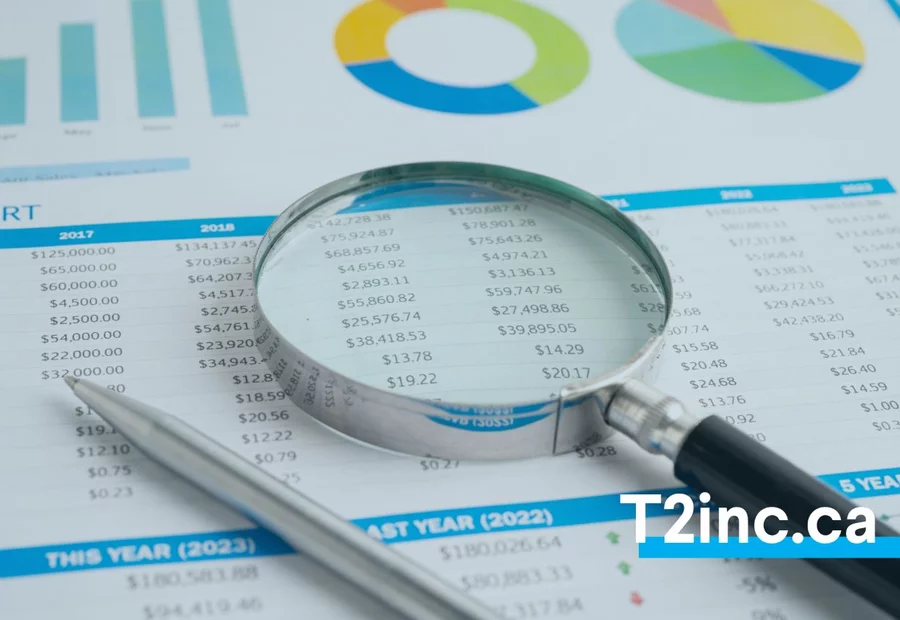What is EBITDA: earnings before interest, taxes, depreciation and amortization?

In today’s fast-paced and ever-evolving business world, entrepreneurs and corporate leaders need reliable metrics to assess their enterprise’s operational strength. EBITDA, which stands for earnings before interest, taxes, depreciation and amortization expense, is one of the most commonly used indicators to evaluate operating income generated through core activities—regardless of how the business is financed or taxed.
Easy to compute and compare across industries, the EBITDA formula helps reveal how much profit is generated from day-to-day operations, without factoring in financial engineering or tax optimization. Whether you’re tracking internal growth, preparing to report EBITDA to stakeholders, or seeking external investment, understanding EBITDA can provide crucial insight into your company’s profitability potential.
What is EBITDA? Definition of earnings before interest, taxes, depreciation and amortization
EBITDA, short for Earnings Before Interest, Taxes, Depreciation and Amortization, is a financial metric often used to assess a company’s operating income by excluding certain non-operational or non-cash expenses. It offers a clear view of how much profit is generated through core business operations, independent of financial leverage or tax strategies.
In practical terms, EBITDA is calculated by taking the net income and adding back interest expenses, corporate income tax, and depreciation and amortization of tangible and intangible assets. By doing so, it removes the influence of financing structure, tax policy, and accounting methods for capital assets.
This metric is widely used because it enables business owners and analysts to use EBITDA to compare companies within the same sector and determine enterprise value based solely on operational performance. It also helps avoid distortions caused by financing decisions or accounting methods that may differ under generally accepted accounting principles.
How is EBITDA used by Canadian entrepreneurs?
EBITDA is more than just a financial term. It’s a decision-making tool that is widely used by business owners, investors, financial institutions and appraisers to assess a company’s potential and determine its market value.
Whether you're planning a merger, preparing for a business sale, or applying for funding, EBITDA can help highlight the gross profit from your company’s regular activities, before being influenced by interest and tax strategies or depreciation and amortization figures.
For instance, during the acquisition of a company, EBITDA is frequently used to establish the fair market value (FMV) of the business, independently of its financing structure or tax planning strategies. It creates a common ground for evaluating companies that may have very different accounting policies or capital structures.
Higher EBITDA can indicate strong earning potential, while lower EBITDA margins may suggest cost control issues or high fixed expenses, such as cost of goods sold. That’s why EBITDA is often included in discussions around net profit forecasts or estimated net income in business plans.
Banks and investors often use EBITDA to assess a company's ability to repay debt or support long-term growth. It can also help you:
- Track your company’s performance year over year;
- Present a clearer financial profile to lenders and stakeholders;
- Benchmark your operating profitability against others in your sector;
- Support fundraising or valuation discussions with solid, neutral figures.
In short, EBITDA offers a clean lens through which to evaluate your company’s potential, free from the distortions of financing or accounting choices. For small and mid-sized business owners, it’s a key indicator that supports strategic planning and business development.
How is EBITDA calculated?
EBITDA is relatively simple to calculate, making it one of the most accessible profitability metrics for entrepreneurs. It’s based on adding back certain non-operational or non-cash expenses to your company’s net income. Here’s the general formula:
EBITDA = Net Income + Interest + Taxes + Depreciation + Amortization
In some cases, you can start from operating profit (or EBIT), especially if you have a detailed company income statement, and add depreciation and amortization to it. This method is particularly useful for assessing the value of a business, or for performing an EBITDA multiple to determine its price in acquisitions and buyouts.
Here’s a simplified example of EBITDA in practice:
EBITDA = EBIT + Depreciation of tangible assets + Amortization of intangible assets
Practical example
Let’s say your Quebec-based incorporated SME reports the following figures for the year:
Net income: $120,000
Interest on debt: $15,000
Income taxes: $35,000
Depreciation of equipment: $25,000
Amortization of software: $10,000
The EBITDA calculation would be:
$120,000 + $15,000 + $35,000 + $25,000 + $10,000 = $205,000
So, the EBITDA for your business would be $205,000. This figure gives a more neutral picture of your company's operating performance, unaffected by financing choices, tax deductions, or asset depreciation methods.
What is a good EBITDA margin?
The EBITDA margin measures how efficiently a company transforms its revenue into operating profit. It shows what percentage of each dollar earned is kept after covering operating expenses, but before interest, taxes, depreciation, and amortization.
In other words, this ratio helps you understand your company’s core profitability, a neutral and widely used performance metric that excludes external financial influences. It’s particularly useful for comparing businesses across the same industry, even if they have different capital structures.
EBITDA margin = (EBITDA ÷ Revenue) × 100
Example :
Revenue: $1,000,000
EBITDA: $250,000
- EBITDA margin = 25%
An EBITDA margin between 15% and 30% is generally considered healthy. However, this benchmark varies depending on your industry and business model. For instance, technology or service-based companies often post higher EBITDA margins, while manufacturing or retail businesses, due to higher cost of goods sold—tend to report lower ratios.
Keep in mind that this value is only one part of the bigger picture. Although the EBITDA ratio gives useful insights into performance, it does not account for cash flow needs, capital expenditures, or debt servicing. That’s why it's important to analyze it in context with other financial indicators.
If you want to better understand what your EBITDA margin means, or if you need to determine the value of your business, a qualified accountant can help you interpret it alongside other relevant metrics.
Caution: what EBITDA doesn't tell you
While EBITDA is a popular indicator of operating performance, it does have limitations. Many accounting professionals and financial analysts warn against relying on it in isolation.
Here are five key caveats to keep in mind:
1. EBITDA doesn’t reflect actual cash flow: EBITDA excludes capital expenditures (CAPEX), debt repayments, and working capital needs. A company can show a positive EBITDA while still facing liquidity issues. That’s why lenders often use additional cash flow ratios to assess a company’s financial health.
2. It omits significant costs: By removing interest, taxes, depreciation, and amortization, EBITDA ignores some real and often substantial expenses. This can distort the picture for highly leveraged or capital-intensive businesses.
3. It can be manipulated: Adjusted EBITDA is not governed by strict accounting standards. Some managers may choose to exclude non-recurring items (e.g., lawsuits, grants, restructuring costs), which can overstate profitability if done too aggressively.
4. It’s not equally relevant across all industries: In sectors with heavy investments in equipment or infrastructure, like manufacturing or logistics, depreciation reflects major operational realities. Ignoring these costs can lead to inflated profitability estimates, especially if comparisons aren’t made with companies in the same industry.
5. It must be viewed in context: On its own, EBITDA offers only a partial view. It’s not a substitute for analyzing pre-tax earnings, free cash flow, or other key financial ratios. For a comprehensive understanding, it should be interpreted as part of your full financial statement analysis.
Earnings before interest, taxes, depreciation and amortization, the useful ratio for your company's financial evaluation
EBITDA is a powerful tool for assessing a company's operating performance. By focusing strictly on earnings from core business activities, it excludes expenses like depreciation and amortization, interest, and taxes, offering a normalized view of profitability that’s easy to compare across businesses. This metric is widely used in company valuations, strategic planning, and by investors, lenders, and appraisers to evaluate a business’s ability to generate cash flow and support future growth. It’s especially relevant when looking to determine the value of a company in contexts like financing, mergers, or acquisitions.
That said, EBITDA does not account for capital expenditures or working capital requirements. It is not a GAAP metric, and while it gives insight into a company’s core value, it must be considered alongside other ratios like EBITDA to net income or coverage ratios to get a complete financial picture.
If you want to use EBITDA to support your business decisions, it’s always best to consult a tax or accounting expert who can guide you through the nuances.
Need a clearer picture of your company's value or tax strategy? The experts at T2inc.ca can help you file your corporate tax returns efficiently, while maximizing the value of your business.
FAQ - Frequently asked questions about EBITDA
What's the difference between EBITDA and net income?
Net income reflects the final profit after all expenses (interest, taxes, depreciation, amortization, etc.). EBITDA, on the other hand, focuses solely on operational earnings, offering a clearer view of business performance without financing or tax-related distortions.
Is EBITDA required for all businesses?
No, calculating EBITDA is not mandatory. However, it is strongly recommended for businesses that want to track profitability, attract investors, or determine their market value before a sale, acquisition, or financing round.
Is EBITDA shown in financial statements?
Not by default. EBITDA is not a standardized line item in traditional financial statements. It’s usually calculated manually using the income statement as a reference.
Can I calculate my own EBITDA?
Yes, you can. With your financial statements in hand, the formula is straightforward. Still, for accurate interpretation, especially if you need to adjust for non-recurring expenses, it’s best to work with a CPA or tax advisor.
- What is EBITDA? Definition of earnings before interest, taxes, depreciation and amortization
- How is EBITDA used by Canadian entrepreneurs?
- How is EBITDA calculated?
- What is a good EBITDA margin?
- Caution: what EBITDA doesn't tell you
- Earnings before interest, taxes, depreciation and amortization, the useful ratio for your company's financial evaluation
- FAQ - Frequently asked questions about EBITDA
Contact our experts
Have a question? Need help? Fill out our online form to get help from our experts.
Contact usNeed more help?
Contact us by filling out our form
Are you interested in our services, but would like more information before taking the plunge? Contact us today and one of our tax accountants will be in touch to help you.
At T2inc.ca, we're committed to helping business owners manage their company's tax affairs so they can grow their business.




